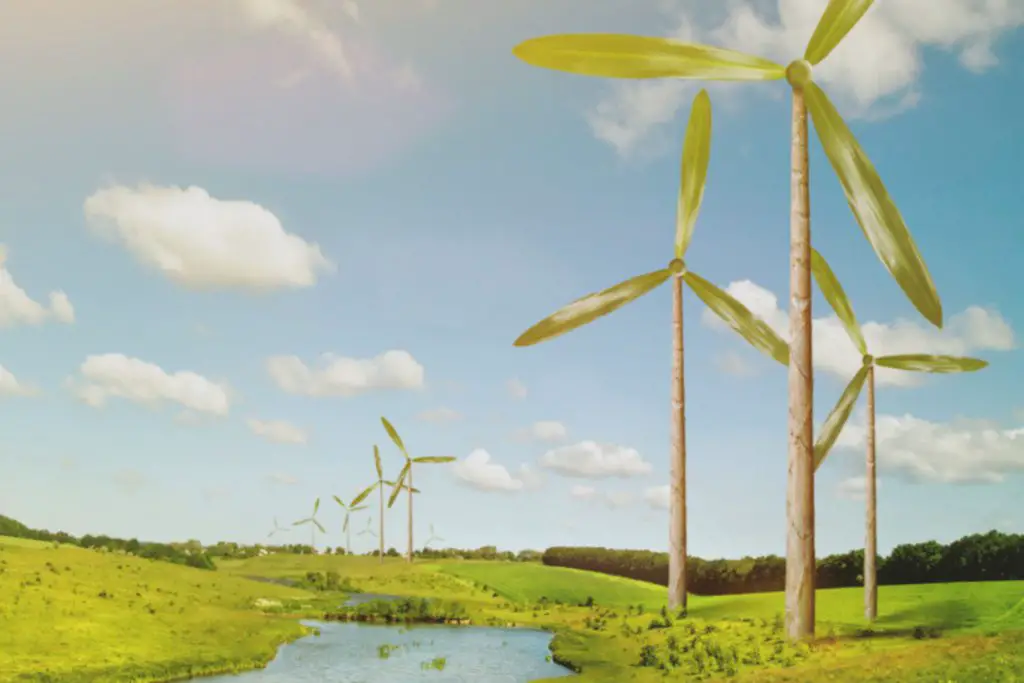5 steps to follow to choose a green energy retailer

The idea of looking for a green/ environmentally friendly energy retailers seems like a daunting one. But I have been able to break it down into 5 steps, based on the experience I gained this month.
In this blog post, I outline these 5 steps and how I applied this, to choose an energy retailer that helps me support green energy sources and help create an energy market that will address climate change.
Step 1: Get a checklist together
Knowing what an environmentally friendly energy retailer looks like is the hard part. It’s impossible to know who you should go with when you don’t know what to look out for.
I’ve given this a lot of thought and have looked at information from various sources to come up with the checklist I outlined in the blog post What to look out for when choosing an energy retailer.
Here is a summary of the checklist once again:
Asset ownership
- The parent company (or any owner of the company) does not extract, transport or generate power from fossil fuels
- They own renewable energy assets or the parent company owns assets that generate renewable energy
Market position
- They actively take the position that coal fire power sources should be phased out of our market
- They promote energy efficiency
- They support technology that allows for small scale/ local electricity generation
Pricing
- Supports localised energy production and community involvement
- Promotes demand management (more on this in another post)
- They off high solar feed-in tariffs to encourage households to go solar
Energy use
- They offset their own energy use
Products offered
- They offer carbon-neutral energy
- They offer GreenPower*
Of course, not all items in the list need to be checked off. The list is a guide, to give you a general idea of what to look out for.
For me, the first item on the list was important – ensuring the retailer does not extract, transport or generate power from fossil fuels.
And your list may not look like this – there may be aspect that are important to you that I haven’t considered. Regardless, the first step is getting clear on what you are looking out for.
Step 2: Review energy retailers using the checklist
Next is looking at all the players in the market to eliminate those that don’t cut is as environmentally friendly energy retailers.
This sounds like a lot of work, but I covered this point in my blog post Australian energy retailers worth doing business with.
In summary, in 2021 these energy retailers meet the checklist:
- Amber electric
- Bright spark power
- Diamond Energy
- Discover energy
- Elysian energy
- Energy Locals
- Enova
- LPE
- Nectr
- OVO energy
- Powerclub
- Powershop
- Radian energy
- Social energy
(I am in NSW, Australia so I have only listed the retailers in that state. If you want a guide on how to come up with your own list, refer to the blog posts mentioned previously, which are linked here and here).
Step 3: Review pricing
My next step was to go onto a comparison website to rank these companies against pricing.
I used Canstar Blue. But a better option would be to use the government-operated website Energy Made Easy, where you can enter more details and you are guaranteed all retailers are listed for comparison.
In any case, I used Canstar Blue and the steps I followed were:
- Selected electricity
- Entered my postcode. This gave a list of all available retailers in my area.
- Sorted the list from lowest to highest price.
- Noted the top 5 results
These are the results I came up with (information current as of Nov 2021):





In all instances, the estimated price is much lower than the estimated price for my current energy retailer (AGL). So it was reassuring (and not surprising!) to know that I could save money by switching to an environmentally friendly energy retailer.
Goes to show that decisions like these don’t have to cost a bucket – do good for the world while saving money in the process!
Step 4: Conduct research into the shortlisted companies
Next, it was a matter of going to the website for each of these companies to see what they were all about.
In looking at their website, I had the checklist in mind – checking who owned these companies, how did they earn their money, what type of energy market were actively supporting, what products were on offer and what steps were they taking to be carbon neutral. I also look at the product reviews on https://www.productreview.com.au/.
If you are looking into changing energy providers in 2021, here is a summary of the top 5 cheapest green energy retailers in NSW and some key points I got from their website, which I used to help me decide on which retailer to go with.
Carbon neutral: They will “reduce the absolute carbon emissions from our operations (Scope 1 and 2 emissions), and the gas and electricity sold to our members (Scope 3 emissions), by around 60% by 2030”.
Carbon neutral: 10% GreenPower is standard and all products are 100% carbon neutral
Carbon neutral: They are focused on becoming a net-zero business.
Demand management: Smart meters are used as a key performance indicator (KPI) for tracking the number of homes optimised.
Local energy production: They are “introducing other flexible low carbon technologies to our members’ homes, including smart thermostats, electric vehicle (EV) smart chargers and vehicle-to-grid (V2G) chargers, home batteries, heat pumps, and storage heaters”.
Corporate stance: They have called for greater action from the energy sector and beyond to reduce greenhouse gas (GHG) emissions.
Ownership: https://en.wikipedia.org/wiki/OVO_Energy OVO Energy is part of the OVO Group, which in turn is a subsidiary of Imagination Industries Ltd, a holding company wholly owned by Stephen Fitzpatrick. On 14 February 2019, Mitsubishi Corporation bought a 20 per cent stake in OVO, valuing the company at £1bn. OVO Group does not owner fossil fuel assets https://company.ovo.com/
2.8 stars from 4 reviews
Verdict: Based on the poor reviews to date and because it’s such a new player, I won’t be considering it. Also, the fact that it’s not Australian owned is another reason I’m not that keen on going with this retailer.
Ownership: Privately owned, the company does not own any power generation plants.
Fixed fee: A small and fixed membership rate gives you access to wholesale energy pricing. So their profits are not dependant on your energy use.
Carbon neutral: Carbon neutral products at no extra cost and all energy used to run Energy Locals is carbon neutral.
Storage: They “proudly support two of the world’s largest battery companies – Sonnen and Tesla – so customers can help keep the grid stable while benefiting from cheaper, cleaner power”.
Solar: They help solar installers get digital meters installed – fast.
Peer-to-peer power: They “partnered with Aussie blockchain startup Enosi to enable the country’s first widely available peer-to-peer solar offer”.
Rum: It seems the company has a purchasing arrangement with a power station that uses biogas (note this does not mean that your energy comes from biogas, your energy will come from the grid as always).
Community investment: They “support organisations that are doing great things: charities such as Cancer Council, schools and communities like Manilla Solar that are developing new, local renewable energy projects.”.
Verdict: I’m interested in this company. I like the way the company supports the generation and management of locally produced energy – from smart meters to investing in batteries to support for power-sharing – this is something I would love to support. And great reviews as well.
Ownership: They are backed by a leader in renewable energy solutions – Hanwha Energy.
Solar: Hanwha Energy Australia is in the process of developing two solar farms.
Solar: Nectr offers solar and battery bundles and a buy now pay later battery to add to existing solar.
Carbon neutral: They offer 100% carbon neutral electricity plans as standard and 100% GreenPower energy plans
2.1 stars from 15 really terrible reviews
Verdict: This retailer is out based on reviews alone. Sorry. Hope this improves in the future for them.
I could not find much on their website but this is a summary:
We are proud to have solar experts who are able to work with homes, businesses and strata communities to provide the perfect solar solution for any situation.
And this from Canstar: Locality Planning Energy (LPE) isn’t a new electricity retailer, but it is new to the residential energy space. Formerly, it provided power to solely strata and embedded energy networks, relevant to those who lived in apartment blocks and other housing complexes.
3.5 out of 72 reviews
Verdict: Small-time operator serving mainly QLD customers. It has some good reviews. But the information on its website is lacking and I’m not sure about ownership (but I gather it’s not the kind of company to own fossil fuel generators given the size of the company). If it was based in NSW I may have considered it. All in all, I will be giving it a miss.
Ownership: Their parent company Meridian Energy is “Australasia’s largest 100% renewable generator, with wind farms and hydro assets across three states and power purchase agreements with other renewable generators in Australia”.
Carbon neutral: They are Australia’s only energy retailer to be certified 100% carbon neutral. They offset emissions associated with their business operations.
Demand Management: They give customers online tools to allow them to keep eye on usage and manage electricity demand.
Demand management: “Curb Your Power is Powershop’s demand response program. Victorian Powershop customers with a smart meter can help reduce demand on the grid by curbing their power usage at certain peak demand times and earn rewards”.
Community investment: They support environmental projects like reef restoration, Power it Forward, and supporting bushfire affected customers and businesses during the COVID-19 pandemic.
2.7 from 457 reviews
Verdict: Love that the parent company is the largest renewable generator in Australia. This company is one I would consider based on that fact alone. But the low product review scores has me concerned. Most of the complaints are abour prices being unexpectantly high. I have knocked this off the list on that basis because I can not afford higher energy costs.
Step 5: Decision time and final check
Ideally, I would have two or three options on hand after checking their website and the product reviews. Then after narrowing down the shortlist, I would call each of them to see which could give me a good deal.
They would be the steps I would follow at this stage.
However, for myself, this Step 5 is redundant. Because after Step 4 my choice is clear.
Energy Locals is the clear winner.
The fact that they have been voted by Finder as the Green Energy Retailer for 2021 is no surprise either.
Don't have time for any of this?
Well, there is an easier option.
You could use the comparison website Finder. They rely on the Green Electricity Guide mentioned in this blog post but they consolidate the information in the guide and provide the links you need to different retailers in the guide. They also assess these retailers under their own criteria and “award” the top-rated retailer with a green energy retailer award (Energy Locals was a winner in one category and Powershop in two other categories this year).
As I mentioned in my blog post, the Geen Energy Guide is not up to date and the aspects considered to come up with the green energy score does not align with my values. The same is also true about the Finder green energy awards criteria – it does not match my values.
So I did not rely on Finder for my analysis and did my own research instead.
Follow these steps and you can form your own conclusions as well.
Any questions let me know.
xxx Tahsin




